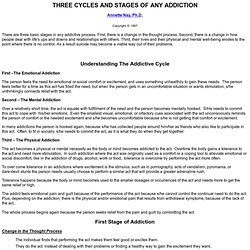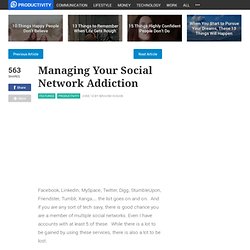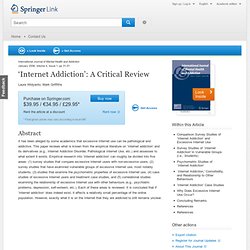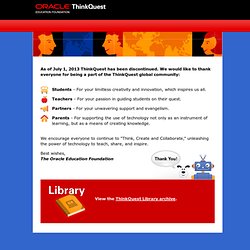

Facebook used to target Colombia's FARC with global rally. Hundreds of thousands of Colombians are expected to march throughout the country and in major cities around the world Monday to protest against this nation's oldest and most powerful rebel group.

Skip to next paragraph Subscribe Today to the Monitor Click Here for your FREE 30 DAYS ofThe Christian Science MonitorWeekly Digital Edition What began as a group of young people venting their rage at the Revolutionary Armed Forces of Colombia (FARC) on Facebook, an Internet social-networking site, has ballooned into an international event called "One Million Voices Against FARC. " "We expected the idea to resound with a lot of people but not so much and not so quickly," says Oscar Morales, who started the Facebook group against the FARC, which now has 230,000 members. The event is another example of how technology – such as text messaging on cellphones – can be used to rally large numbers of people to a cause. The families of the 45 remaining FARC hostages will not march either. Colombian people against FARC - 4 february 2008. The Continuum Theory of Social Media.
Recently I enjoyed a great conversation with Tom Cunniff on Twitter.

It revolved around social media definitions and how brands and voices could be heard across the sphere. I was so intrigued by Tom’s views I asked if he’d guest here. I’m thankful he said yes. People talk about Social Media as if it’s one thing. This is the source of a lot of “you-just-don’t-get-it” arguments online: people fight holy wars to defend their “it” vs. someone else’s “it” and never see that two sides can never agree because they’re not talking about the same thing. I don’t think Social Media is one thing. On the “Social” side of the continuum, it’s all about the conversation. The Definition of Addiction Adopted: April 12, 2011 Revised: Cycles and Stages of Addiction. Annette Nay, Ph.D.

Copyright © 1997 There are three basic stages in any addictive process. First, there is a change in the thought process. Second, there is a change in how people deal with life's ups and downs and relationships with others. Third, their lives and their physical and mental well-being erodes to the point where there is no control. Understanding The Addictive Cycle. Netaddiction.com. Video Game Addiction - Internet Gaming Addiction. Managing Your Social Network Addiction. Facebook, LinkedIn, MySpace, Twitter, Digg, StumbleUpon, Friendster, Tumblr, Xanga… the list goes on and on.

And if you are any sort of tech savy, there is good chance you are a member of multiple social networks. Even I have accounts with at least 5 of these. While there is a lot to be gained by using these services, there is also a lot to be lost. In case you hadn’t heard, Facebook users share not only a social network of over 200 million, but also significantly lower grade point averages (GPAs) than their non-member classmates (according to Time Magazine). And apparently Jennifer Aniston ended her relationship with John Mayer because he was addicted to Twitter (as apposed to drugs like other musicians… ). You may think, “I’m not addicted, I can quit anytime!” Obviously the first step in your rehabilitation is to admit there is a problem. You need to realize that these systems are in place for you to use, not to use you. It’s time to take back your free time. Facebook Addiction Growing Issue. Psychologist Discusses Facebook Addiction. Playing prosocial video games increases empathy and decreases schadenfreude.
Mary Ann Liebert, Inc. - CyberPsychology & Behavior - 8(2):110. To cite this article:Brian D.

Ng and Peter Wiemer-Hastings. CyberPsychology & Behavior. April 2005, 8(2): 110-113. doi:10.1089/cpb.2005.8.110. International Journal of Mental Health and Addiction, Volume 4, Number 1. It has been alleged by some academics that excessive Internet use can be pathological and addictive.

This paper reviews what is known from the empirical literature on ‘Internet addiction’ and its derivatives (e.g., Internet Addiction Disorder, Pathological Internet Use, etc.) and assesses to what extent it exists. Empirical research into ‘Internet addiction’ can roughly be divided into five areas: (1) survey studies that compare excessive Internet users with non-excessive users, (2) survey studies that have examined vulnerable groups of excessive Internet use, most notably students, (3) studies that examine the psychometric properties of excessive Internet use, (4) case studies of excessive Internet users and treatment case studies, and (5) correlational studies examining the relationship of excessive Internet use with other behaviours (e.g., psychiatric problems, depression, self-esteem, etc.).
Each of these areas is reviewed. The Benefits of Facebook “Friends:” Social Capital and College Students’ Use of Online Social Network Sites - Ellison - 2007 - Journal of Computer-Mediated Communication. Internet addiction disorder. Internet addiction disorder (IAD), now more commonly called problematic Internet use (PIU)[1] or compulsive Internet use (CIU).[2] Other overlapping terms include Internet overuse, problematic computer use or pathological computer use – and even iDisorder.[3] These terms avoid the word addiction and are not limited to any single cause, but only reflect a general statement about excessive computer use that interferes with daily life.[4] IAD was originally proposed as a disorder in a satirical hoax by Ivan Goldberg, M.D., in 1995,[5] though some later researchers have taken his essay seriously.

Other habits such as reading, playing computer games, or watching very large numbers of Internet videos or movies are all troubling only to the extent that these activities interfere with normal life. Internet and Computer Addiction: signs, symptoms, and treatment. Internet Addiction Test. The Internet Addiction Test emerged as the first validated measure of Internet and technology addiction.

The Internet Addiction suite of tests brings together the Internet Addiction Test (IAT) and the Internet Addiction Test for Families (IAT-F). The IAT is a self-report instrument for adolescents and adults. The IAT-F is for children and adolescents and completed by an informant who knows the youth well. Both instruments can be used together in assessment to obtain a well-rounded profile of the client’s Internet addiction and also to identify discrepancies amongst raters, who could benefit from psychoeducation. For more information on using the IAT and building an Internet Addiction treatment program in your practice, visit RestoreRecovery.net for our comprehensive workbook and training programs. Internet Addiction: The Next Disability? Internet addiction Disorder: The Mind Prison-types. As of July 1, 2013 ThinkQuest has been discontinued.

We would like to thank everyone for being a part of the ThinkQuest global community: Students - For your limitless creativity and innovation, which inspires us all. Teachers - For your passion in guiding students on their quest. Technology addiction can affect the brain. Digital Technology Overload Could Hurt Your Brain and Family. When Technology Addiction Takes Over Your Life. Are you a tangled mess of BlackBerrys, emails, PDAs, iPhones, laptops, and cell phones?

Here’s how to untangle your life and find healthy balance. Why do I need to register or sign in for WebMD to save? We will provide you with a dropdown of all your saved articles when you are registered and signed in. Jenn Hoffman, Phoenix-based CEO of The J Brand Group, should have been enjoying a relaxing vacation on the Cote d'Azur. Sipping champagne and nibbling on cheese at the posh Louis XV restaurant, she was eagerly awaiting her entree, a poached Breton lobster. Our addiction to technology trumps caffeine, chocolate and alcohol. This probably sounds familiar: You're out to dinner with friends, and everything's fun, until you get that itch. It's been 20 minutes, and you really want to check Facebook, or Twitter, or Foursquare or email. Forget about wanting; this is needing. You finally give in to the urge and sneakily check your phone under the table -- or fake an urgent visit to the bathroom, where you'll take a hit of the Internet while huddling in a stall.
Anecdotally, our Internet use seems to have spawned real addictions. And according to several recently released surveys, we've got it bad. More than half of Americans would rather give up chocolate, alcohol and caffeine for a week before parting temporarily with their phones, according to a recent survey by technology firm TeleNav. One-third would give up sex, 22% would give up their toothbrushes (versus 40% of iPhone users, who evidently love their phone more than clean teeth) and 21% would rather go shoeless before separating from a mobile phone. Is video-game addiction a mental disorder? - Technology & science - Games. Video Game Addiction. World of Warcraft: Dangerous Addiction or Cultural Phenomena. The World Of Warcraft Family. A Wii Fracture. To the Editor: In 1990, Brasington described “Nintendinitis”1 in a patient with pain over the extensor tendon of her thumb after 5 hours of playing a Nintendo video game. Nintendo next released the highly popular Wii games console that includes a wireless remote capable of detecting movement in three dimensions.
Clinicians began to see patients with “Wiiitis.”2 There do not seem to be reports of associated bony injuries, although interactive gaming has been reported to aid in the rehabilitation of patients after fracture.3 In the United Kingdom, a healthy 14-year-old girl presented to the emergency department at Horton General Hospital in Banbury (near Oxford), having sustained an injury to her right foot with associated difficulty in mobilization. She had been playing on her Wii Fit balance board and had fallen off, sustaining an inversion injury. On examination, there was soft-tissue swelling around the base of the fifth metatarsal, which was maximally tender to palpation. Karen A. 1.